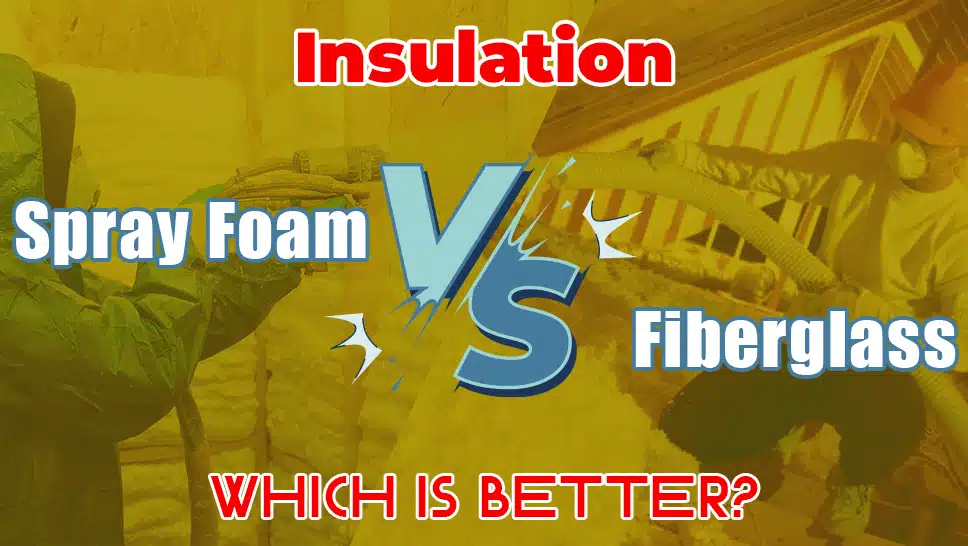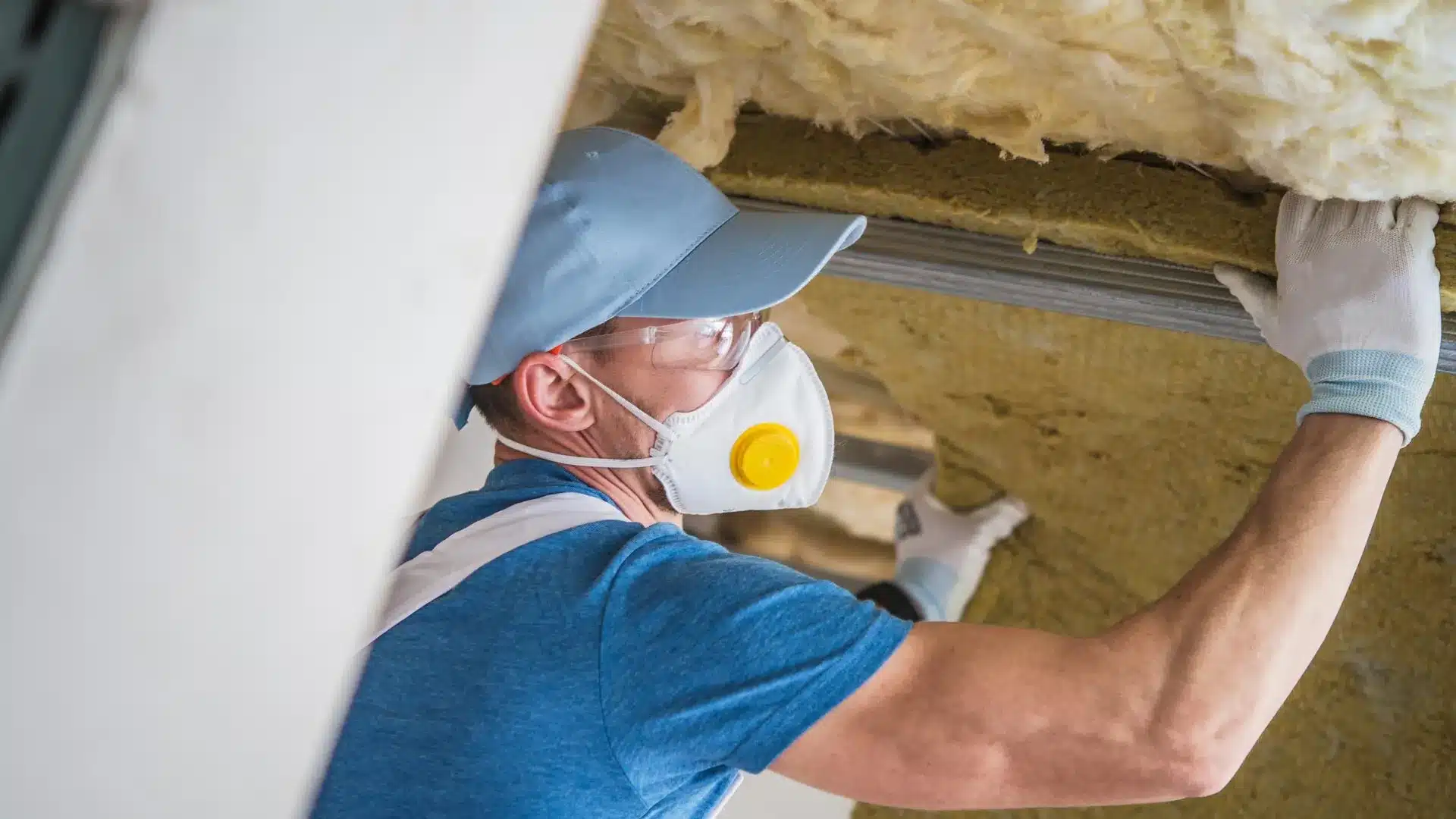
When it comes to insulating your home or commercial property, choosing the right material can significantly impact comfort, energy efficiency, and long-term costs. Spray foam insulation and fiberglass insulation are two of the most popular options available, each with distinct advantages and drawbacks. In this in-depth comparison, we will explore both types of insulation to help you determine which is better suited for your needs.
What is Spray Foam Insulation?
Spray foam insulation is a modern insulating material that consists of two main types: open-cell and closed-cell foam. Both types start as liquid chemicals that, when mixed, expand and harden into a solid foam. This expanding property allows spray foam to fill gaps, cracks, and voids, creating a robust barrier against heat transfer.
Open-Cell vs. Closed-Cell Foam
- Open-Cell Foam: This type of spray foam is characterized by its softer, more flexible structure. It has a lower R-value per inch (typically around 3.5) and is less dense than closed-cell foam. Open-cell foam is often used for interior applications and offers good soundproofing qualities.
- Closed-Cell Foam: Closed-cell foam is more rigid and dense, with a higher R-value per inch (around 6 to 7). It provides superior insulation and serves as a moisture barrier, making it ideal for exterior applications and areas prone to high humidity.
Key Benefits
- Superior Air Sealant: Spray foam insulation excels at creating an airtight seal. Its expanding nature allows it to fill even the smallest gaps and cracks, which minimizes drafts and air leaks. This airtight seal helps maintain consistent indoor temperatures and reduces energy consumption.
- High R-Value: The high R-value per inch of spray foam insulation means that it provides excellent thermal resistance. This high level of insulation efficiency can lead to significant energy savings over time.
- Moisture Barrier: Closed-cell spray foam acts as a moisture barrier, preventing water infiltration. This property can help mitigate issues related to mold and mildew growth, which can be particularly beneficial in damp or humid climates.
- Longevity: Spray foam insulation is durable and can last the lifetime of your home without needing replacement or repair. Its resilience makes it a cost-effective investment in the long run.
- Soundproofing: Spray foam insulation also provides effective soundproofing, reducing noise transmission between rooms and from external sources.
What is Fiberglass Insulation?

Fiberglass insulation has been a staple in the insulation industry for decades. It consists of fine glass fibers that are woven into batts, rolls, or loose-fill forms. The insulation works by trapping air within its fibers, which reduces heat transfer.
Types of Fiberglass Insulation
- Batts and Rolls: These are pre-cut sections of fiberglass that can be placed between studs, joists, and rafters. They are commonly used in walls, ceilings, and floors.
- Loose-Fill: Also known as blown-in fiberglass, this type is used for filling cavities and spaces. It is often applied in attics and wall cavities.
Key Benefits
- Cost-Effective: Fiberglass insulation is generally less expensive than spray foam. Its affordability makes it a popular choice for those on a budget.
- Ease of Installation: Fiberglass batts and rolls are relatively easy to install, especially in new construction or open spaces like attics. For loose-fill fiberglass, professional installation is recommended for optimal coverage.
- Fire Resistant: Fiberglass is non-combustible, meaning it does not burn easily. This property provides an added layer of fire resistance to your home.
- Environmental Impact: Many fiberglass insulation products are made from recycled glass, making them a more environmentally friendly option compared to other materials.
- Established Track Record: Fiberglass insulation has a long history of successful use, making it a tried-and-true option for many residential and commercial applications.
Spray Foam Insulation vs. Fiberglass: A Comparative Analysis
1. Insulating Performance
- Spray Foam Insulation: The high R-value per inch of spray foam insulation provides excellent thermal resistance. Its ability to expand and fill gaps means that it offers superior performance in preventing heat transfer. This can lead to lower energy bills and a more comfortable indoor environment.
- Fiberglass Insulation: Fiberglass insulation has a lower R-value per inch compared to spray foam. While it remains effective when installed correctly, its performance can be compromised by gaps, compression, and settling over time. Proper installation is crucial to achieving optimal performance with fiberglass.
2. Air and Moisture Control
- Spray Foam Insulation: Spray foam’s expanding nature allows it to create a tight, airtight seal. This prevents air leaks and minimizes moisture infiltration. The closed-cell variety of spray foam also acts as a moisture barrier, which can reduce the risk of mold and mildew.
- Fiberglass Insulation: Fiberglass insulation does not offer an inherent air seal. To achieve similar air-tightness, additional measures such as air barriers or vapor barriers may be required. If fiberglass insulation becomes wet or is not properly installed, it can lead to moisture problems and reduced insulation effectiveness.
3. Installation and Maintenance
- Spray Foam Insulation: Spray foam requires professional installation due to the complexity of the application process. Once installed, it generally requires minimal maintenance. The insulation’s durability and resistance to settling or compression contribute to its long-term effectiveness.
- Fiberglass Insulation: Fiberglass insulation can be a DIY project for those comfortable with home improvement tasks. However, it may require periodic checks and maintenance to ensure it remains effective. Issues such as compression or damage can impact its insulating performance.
4. Environmental Impact
- Spray Foam Insulation: Spray foam insulation can have a higher environmental impact during manufacturing due to the chemicals involved. However, its energy efficiency can offset this impact by reducing energy consumption over time. Some spray foam products also offer environmentally friendly options with lower global warming potential.
- Fiberglass Insulation: Fiberglass is often made from recycled materials and is considered to have a lower environmental impact compared to spray foam. Its production process is less energy-intensive, making it a more eco-friendly choice in some respects.
5. Cost Considerations
- Spray Foam Insulation: The initial cost of spray foam insulation is higher than fiberglass. However, its superior insulating performance and energy savings can lead to cost savings over time. The long-term benefits of spray foam, including its durability and energy efficiency, can make it a more economical choice in the long run.
- Fiberglass Insulation: Fiberglass is generally more budget-friendly upfront. However, the potential need for additional air-sealing measures and its lower insulating efficiency could impact long-term costs. It’s important to consider both initial costs and potential energy savings when evaluating fiberglass insulation.
Making the Right Choice for Your Property
Factors to Consider
- Budget: Assess your initial budget and consider long-term savings. While spray foam may be more expensive initially, its energy efficiency and durability can lead to significant savings over time. Fiberglass insulation is a more budget-friendly option but may require additional measures to achieve similar energy efficiency.
- Energy Efficiency Goals: If energy efficiency and comfort are top priorities, spray foam insulation’s superior performance and air-sealing capabilities may be advantageous. Spray foam’s high R-value and airtight seal can help reduce energy consumption and maintain consistent indoor temperatures.
- Installation Preferences: Consider whether you prefer a DIY installation or a professional service. Fiberglass insulation may be suitable for DIYers, especially in new construction or open spaces. Spray foam typically requires professional installation due to its complex application process.
- Environmental Concerns: Evaluate the environmental impact of both options and consider your eco-friendly preferences. Fiberglass insulation is often made from recycled materials and has a lower environmental impact, while spray foam’s energy efficiency can offset its manufacturing footprint.
- Local Climate: The effectiveness of insulation can vary based on your local climate. In regions with extreme temperatures or high humidity, spray foam insulation may offer better performance and protection against moisture.
Ready to Upgrade Your Insulation?
Choosing between spray foam and fiberglass insulation involves weighing various factors such as cost, performance, and environmental impact. Both types of insulation have their unique advantages and are suitable for different applications. For expert advice tailored to your specific needs and professional installation services, contact Spray Foam Genius Marketing.
We specialize in connecting you with top-notch spray foam insulation contractors and can assist you in making the best choice for your property. For more information or to get started,Call us at 877-840-FOAM for USA and 844-741-FOAM for Canada visit our website at sprayfoamgeniusmarketing.com, or email us at [email protected] to get started.
- Social Media Marketing for Spray Foam Businesses: What Works in 2025? - February 6, 2025
- Best SEO Strategies for Spray Foam Insulation Contractors to Rank #1 on Google - February 6, 2025
- What is Spray Foam Insulation? Benefits and Applications - February 5, 2025

